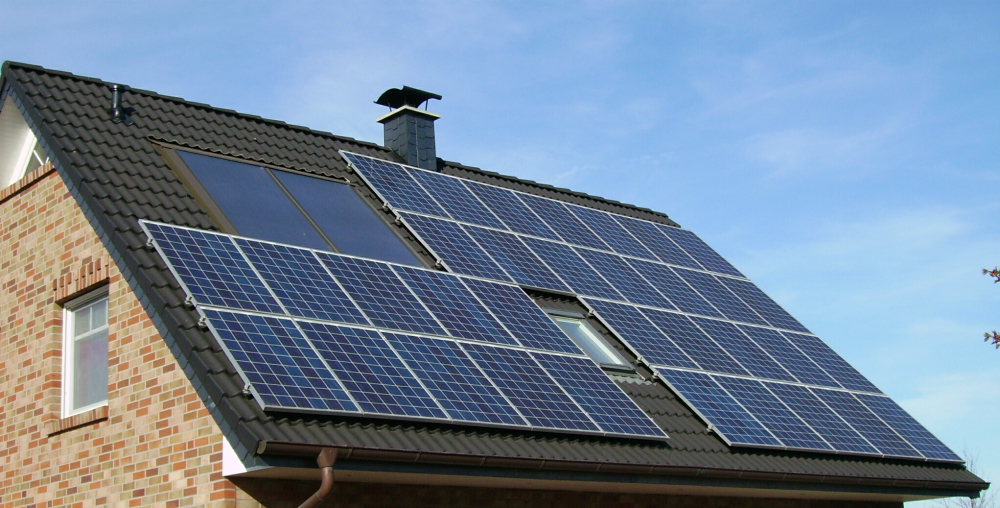Solar panels made with toxic lead may soon be able to use “green” element BISMUTH instead
08/16/2017 / By Russel Davis

A recent study published in Advanced Materials revealed that the so-called “green” element bismuth may be incorporated to solar panels in the future without the risk of potentially detrimental effects on human, animal, and environmental health.
In the previous years, silicon has been the preferred material in developing solar cells. However, researchers noted that while silicon was highly effective in converting light to energy, its very low defect tolerance meant that it requires high levels of purity. As a result, silicon-based solar cells proved to be more energy intensive to produce.
On the other hand, lead-based perovskite solar cells appeared to be cheaper and did not require purity levels similar to silicon. However, the hybrid materials drew criticisms from the scientific community due to the uncertainty of its potential effects on humans, animals and the environment. (Related: Solar panel manufacturing devastates the environment with toxic heavy metals, warns report.)
To address this, a team of researchers at the University of Cambridge collaborated with experts from the Massachusetts Institute of Technology, the National Renewable Energy Laboratory, and the Colorado School of Mines to examine the potential of bismuth in energy production.
The researchers found that bismuth oxyiodide showed the same defect tolerance as those of lead-based solar cells. The experts also noted that the bismuth material was stable in air for at least 197 days. The scientists also said that sandwiching the new material between two oxide electrodes helped convert up to 80 percent of light into electrical charge.
“Bismuth oxyiodide has all the right physical property attributes for new, highly efficient light absorbers. I first thought of this compound around five years ago, but it took the highly specialised experimental and theoretical skills of a large team for us to prove that this material has real practical potential,” co-author Professor Judith Driscoll told ScienceDaily.com.
“Previously, the global solar cell research community has been searching for non-toxic materials that replicate the defect tolerance of the perovskites, but without much success in terms of photovoltaic performance. When I saw this work, my team calculated based on the optical properties that bismuth oxyiodide has a theoretical limit of 22 percent efficiency, which is comparable to silicon and the best perovskite solar cells. There’s a lot more we could get from this material by building off this team’s work,” said outside expert Dr. David Scanlon.
Non-toxic, flexible solar cells also show potential in zero-energy buildings
Just last year, a team of Australian researchers had also zeroed-in on making thin solar cells made from otherwise non-toxic materials. The solar cells were targeted for use in zero-energy buildings.
As part of the study, researchers at the University of New South Wales’ School of Photovoltaic and Renewable Energy Engineering utilized a competing thin-film technology to develop solar cells made from abundant materials such as copper, zinc, tin and sulphur. The solar cells were called CZTS.
According to the U.S. National Renewable Energy Laboratory, the CZTS solar cells showed a 7.6 percent efficiency in a one cm2 area. The results also showed that the new solar cells contained none of the toxicity issues associated with its predecessors cadmium-telluride (CdTe) and copper-indium-gallium-selenide (CIGS) solar cells. However, the lead researcher noted that more work is needed to catch up on both CdTe and CIGS in terms of efficiency and cell size.
“This is the first step on CZTS’s road to beyond 20% efficiency, and marks a milestone in its journey from the lab to commercial product. There is still a lot of work needed to catch up with CdTe and CIGS, in both efficiency and cell size, but we are well on the way,” lead researcher Dr. Xiaojing Hao told the Science Daily website.
Sources include:
Tagged Under: alternative energy, bismuth, green energy, manufacturing, renewable energy, solar cells, solar energy, solar panels, toxic elements
RECENT NEWS & ARTICLES
COPYRIGHT © 2017 ENVIRON NEWS




















